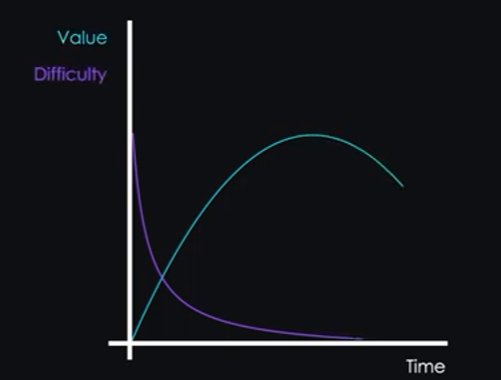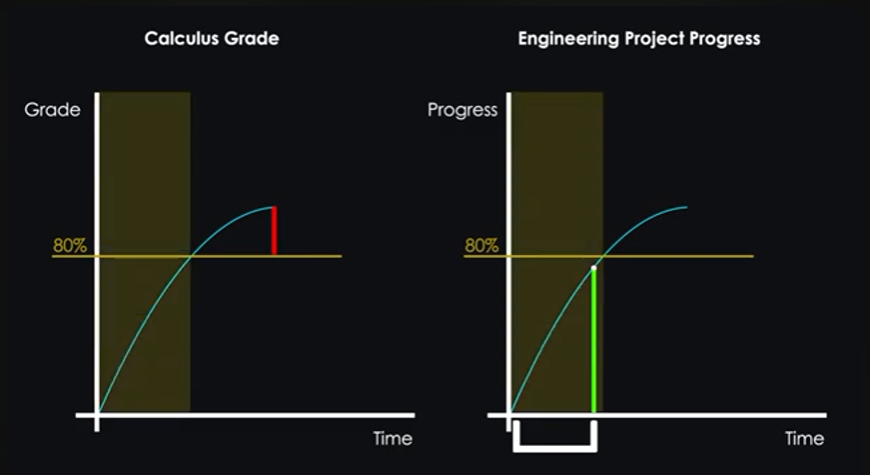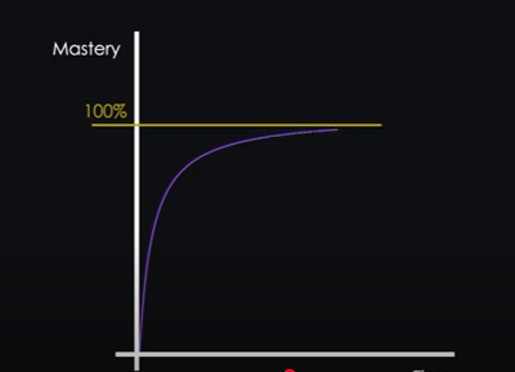The Law of Diminishing Returns
Every action we take—whether studying, creating, or learning a skill—exists on a curve of diminishing returns. Initially, effort yields substantial rewards: the first hour of studying for an exam solidifies foundational knowledge, the early stages of writing a novel generate momentum, and the first attempts at snowboarding teach basic balance. But as we pour more time into the same activity, the incremental value of each additional unit of effort begins to wane. By the 57th hour of cramming, for instance, fatigue sets in, retention plateaus, and the cost of lost opportunities—like neglecting creative projects or rest—outweighs any marginal gain. This phenomenon underscores a universal truth: progress is not linear. To achieve goals efficiently, we must learn to identify when effort transitions from high-value to low-value, then pivot strategically.

Optimization vs. Maximization
At the heart of productivity lies a critical distinction: optimization seeks to maximize value per unit of time, while maximization blindly pursues perfection. Optimization demands constant recalibration. It asks: Is this the highest-value task I could be doing right now? If returns diminish, it’s time to escalate the challenge or redirect focus. For example, a novice guitarist might practice chord transitions until they feel automatic, then immediately tackle a more complex song to avoid plateauing.
Maximization, by contrast, fixates on thoroughness. It thrives in the “finishing stage” of projects—editing a manuscript, refining a product’s user interface, or perfecting a musical performance. Here, meticulousness is justified. But in the making progress phase, doggedly chasing perfection becomes counterproductive. The brain, once comfortable with a skill, resists leaving its comfort zone. This inertia is the enemy of growth.
Embrace the Fall
Several months ago, I tried rock climbing for the first time. On the beginner wall, I slipped repeatedly, but within hours, my grip and footing improved. Had I stayed there to “perfect” my technique, I’d have wasted time on diminishing gains. Instead, I tackled more difficult routes, falling more often but accelerating my progress. Each slip signaled growth, not failure.
This mirrors a fundamental truth: discomfort is a predictor of value. In learning, creativity, or innovation, the “optimal failure rate” exists. If you’re not struggling, you’re not pushing boundaries. A first-time climber who never falls isn’t challenging themselves; a student who aces every practice test without difficulty isn’t truly learning. The goal is to operate in the “challenge zone,” where effort yields exponential returns.

Balancing Present Progress and Future Consequences
Critics argue that rushing through basics risks entrenching bad habits. What if poor technique today slows progress tomorrow? The answer lies in dynamic prioritization. If foundational skills (e.g., proper form in weightlifting, clean code in software development) are critical to future success, they’re high-value and worth perfecting early. However, many skills self-correct with experience. A writer’s early drafts may be riddled with clichés, but feedback and practice naturally refine their voice.
Mistakes are not just inevitable—they’re instructive. The key is to optimize proactively. For instance, a student aiming for a career in engineering might prioritize hands-on projects over chasing perfect grades. While a 100% in calculus looks impressive, the hours required to go from 85% to 100% could instead build a robotics prototype—a steeper return on investment.

The Education Paradox
Traditional education often conflates thoroughness with excellence. Schools reward maximization: perfect grades, flawless assignments, and error-avoidance. But life rewards optimization. Consider two job candidates: one with flawless academic records but no practical experience, and another with lower grades but a portfolio of independent projects. The latter often demonstrates creativity, initiative, and problem-solving—skills no exam can quantify.
This isn’t a call to neglect academics. Rather, it’s a plea to weigh opportunity costs. Is memorizing every textbook detail worth sacrificing internships, networking, or passion projects? For those with aspirations beyond academia, the answer is often no.
The Reflection Habit: Staying on the Razor’s Edge
Strategic progress requires regular self-audits. After a work session, ask: Was this the highest-value use of my time? Weekly or monthly reviews can reveal patterns: Are you clinging to comfortable tasks? Over-investing in low-impact details?
Human behavior resists change, so structure these reflections. Set calendar reminders. Use tools like the Eisenhower Matrix to categorize tasks by urgency and importance. The goal is to institutionalize the habit of questioning—not to paralyze with overanalysis, but to cultivate awareness.


The Trap of Productivity
Ironically, those most obsessed with productivity often fall victim to “systemization.” Endlessly tweaking note-taking apps, reorganizing desks, or hunting for “perfect” workflows becomes a form of procrastination. The solution? Just start. Write the first paragraph of the novel. Code the MVP of the app. Record the song draft.
Thoroughness has its place—a final proofread, a quality-check before product launch—but it’s a spice, not the main course. Most endeavors thrive on momentum, not polish.
The Steep Curve of a Meaningful Life
Time is finite, but our choices in wielding it are infinite. The law of diminishing returns teaches us to focus on the steepest part of the curve—the phase where effort unlocks disproportionate rewards. It’s a philosophy of trade-offs: imperfect progress over stalled perfection, learning through friction over complacent mastery.
Ultimately, life’s value isn’t measured by tasks completed or boxes checked, but by the depth and impact of what we choose to pursue. As J.R.R. Tolkien wrote, “All we have to decide is what to do with the time that is given us.”